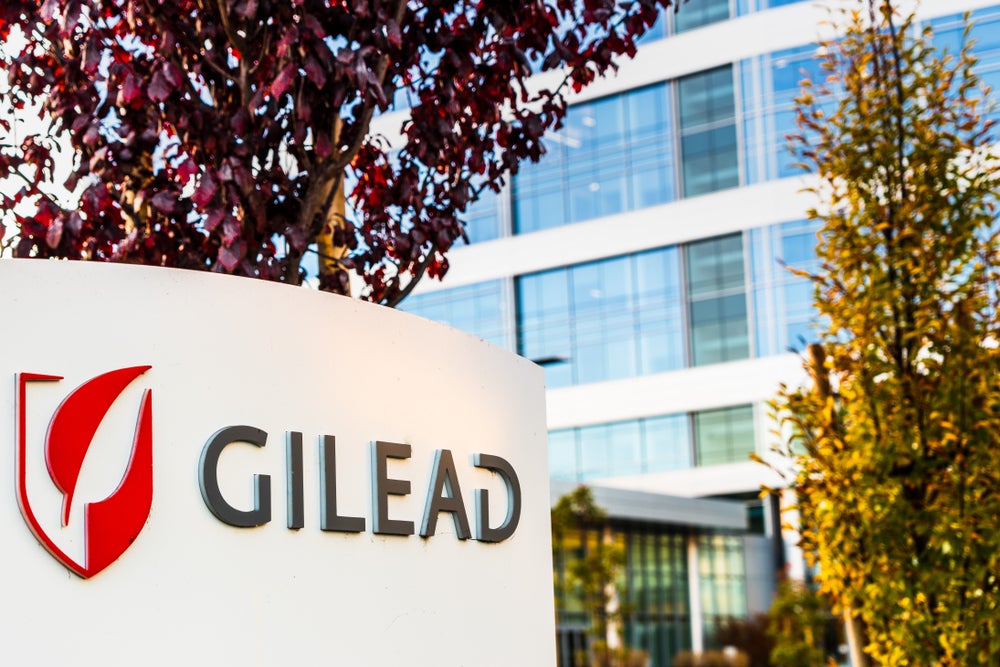
Israel-based RedHill Biopharma is a speciality biopharmaceutical company that develops proprietary drugs primarily for gastrointestinal (GI) diseases. These conditions often have an unmet clinical need and a largely inadequate the standard of care.
The company has an extensive pipeline of clinical-stage products in the GI field, as well as cancer and pulmonary conditions, and has developed several commercial partnerships with other innovative pharmaceutical companies. Recently RedHill has recorded significant positive results in trials of its RHB-104 and RHB-105 drugs, and has performed an experimental early-stage Ebola therapy.
RedHill’s chief operating officer Gilead Raday discusses the latest milestones in the company’s GI pipeline, the company beginning to look outside the GI space and what the future looks like for the company and the industry as a whole.
Allie Nawrat: RedHill has recently received positive Phase III results for your RHB-104 indicated for Crohn’s Disease. Could you explain more about the drug and its development to this point?
Gilead Raday: RHB-104 is a proprietary, orally administered antibiotic combination therapy. It has antibacterial and anti-inflammatory properties. The drug recently achieved positive top-line results in the MAP study, the Phase III study we conducted. It demonstrated that RHB-104 provided a significant and clinically meaningful benefit to Crohn’s patients. So it could be highly promising as a much needed treatment option for patients with Crohn’s disease.
RHB-104 was originally developed on the hypothesis that Crohn’s disease is triggered by some kind of infection. There is a field of medical research, which is linked to the Helicobacter pylori story, which looks at autoimmune inflammatory diseases triggered by an unknown cause and looking at potential pathogens as the cause.
How well do you really know your competitors?
Access the most comprehensive Company Profiles on the market, powered by GlobalData. Save hours of research. Gain competitive edge.

Thank you!
Your download email will arrive shortly
Not ready to buy yet? Download a free sample
We are confident about the unique quality of our Company Profiles. However, we want you to make the most beneficial decision for your business, so we offer a free sample that you can download by submitting the below form
By GlobalDataAN: What makes Crohn’s Disease so difficult to treat and what makes RHB-104 special?
GR: The problem with Crohn’s disease is that the therapies that are approved to treat it are limited in their effectiveness. Only a minority of patients respond positively, especially in the long-term. Standard of care, which is biologic, is associated with serious adverse events, such as serious infections and even malignancy.
There is a real unmet need for new therapies, which will approach the disease with a real profile and effectiveness on the one hand, and a good safety profile on the other.
We are using a triple combination of the antibiotic, which is a well-known standard approach. We did show in the study that the distinct mechanism of action of antimicrobacterial together with anti-inflammatory properties, has been shown to provide the clinical benefit in terms of remission to patients, who didn’t respond well over time to other therapies, and with a very good safety profile, so without those serious side effects.
AN: What is the next step for RHB-104?
GR: We expect another study will be required to confirm the results and expand upon them. We plan to first complete analysis of the study that we just announced top-line results for; this should be completed over the coming months.
Then we will put together key opinion leaders to plan the next study. We will be discussing with the FDA, then agree on the plan forward and implement it towards approval.
Ideally we would proceed in parallel with both the US and Europe. So the next study will be able to complement the current global trial and allow for filing of approval in both territories.
AN: Are there any other drugs in RedHill’s development pipeline that are looking promising?
GR: One of our potentially leading products is Talicia (RHB-105). It is a next-generation, superior combination of antibiotics and proton pump inhibitor for H. pylori and gastric cancer.
The problem with the existing therapy for H. pylori is that it is encountering increasing and growing resistance to the current antibiotics. A new treatment is required; the WHO and the FDA have put H. Pylori on a list of pathogens with high priority to find new treatments.
We are developing a second-generation therapy that has very little resistance, and potentially superior efficacy. We completed a Phase III study with our product showing excellent eradication rates, close to 90%, where current standard of care is already declining to approximately to 50-70%. So this could be potentially a very big opportunity for us. We are currently completing a confirmatory Phase III study with top line results expected in Q4 this year. If it is positive and confirms the results of the previous study, we would anticipate filing a new drug application in the US in early 2019.
AN: RedHill has recently been granted exclusive rights to co-promote Napo Pharmaceuticals’ Mytesi in the US. How did the collaboration come about?
GR: Mytesi, which is indicated to treat diarrhoea symptoms in HIV patients, is the last of several deals and licensing agreements that we have executed in recent years. One of RedHill’s core competencies is business development and conducting licensing with partners. We have a deep understanding with the GI market, familiarity with products on the market, and then development.
This meant we were able, through our network of contacts, and familiarity with the field to identify Napo and the product and to establish an excellent partnership proving synergy to both parties by combining the capabilities and advancing Mytesi onto the market.
AN: Are you planning any future collaborations with pharmaceutical companies, such as Napo?
GR: In general, we are continuing to look for opportunities to develop partnership to bring products to our commercial group in the US, so they can promote it to GI clinics and physicians. We also plan to do that with our own products, for example Talicia (RHB-105), which should be launched in the second half of 2019. We continue with this model, and we will continue to look for such opportunities.
With Mytesi and Napo specifically, there are opportunities to ask expand the product and its scope. But that is something for the future; we haven’t got any concrete plans as of yet.
AN: Are you considering developing any other drugs outside of the gastrointestinal (GI) space?
GR: One very good example is a product we are developing very late stage for nontuberculous micro-bacterial infection (NTM), with open pulmonary indications. That is something that we are planning to grow into a pivotal Phase III study in early 2019. We have already a triple combination of antibiotics that we put together, which are ideal to treat this type of micro-bacterial infection. We could be the first drug approved for this indication, so we would conduct a study against a placebo.
The product has a very low risk of failure because of the known attributes of antibiotics that we are using and the fact that placebo doesn’t have real effects on this bacteria.
We would expect to market this as first-line therapy for NTM, a high unmet need area.
AN: Looking to the future, what do you predict will be the main areas driving revenue for RedHill over the next five years?
GR: First, of all Talicia for H. pylori, which could reach the market and be launched in the second half of 2019. 30-40% of the US population is infected with H. pylori, so it is potentially a big product for a small company. It is something that could be a company-changer as the first product that we will promote.
After that, we have, RHB-204, which is our product for NTM. With a probable single study that starts in 2019, it could come onto the market with a very large potential because there is nothing out there already approved to treat these patients.
After that I would probably look at RHB-104 for Crohn’s. It has another large study to complete, which is why we expect it to be on the market after the other two products.
Finally we can expect to market Bekinda (RHB-102) for IBS and gastroenteritis.
That is the big four from our pipeline. We really could build a large company based on these product if and when they get to the market. We might materialise revenue earlier if we complete partnership deals for any of these products.
AN: What do you predict will the main challenges for biopharma in general and RedHill specifically in the coming few years?
GR: Across the pharma industry, the main challenges are probably moving towards general trends of individualised medicine: the search for biomarkers to target therapies to patients who will most benefit from them.
There is also a trend of pricing pressures, more and more in the US especially. That affects what types of drugs and the cost of therapy for patients you can develop.
We are well-positioned at RedHill to address these trends. On the one hand, we are looking for biomarkers. We are continuing to look for biomarkers in the Crohn’s patient population. Also, we are developing small molecules so that the cost of goods of our products are relatively low when you compare to the biologics in the industry. So we are more flexible with pricing to be able to cope with pricing pressures and provide the benefits to patients without creating too high of an economic burden.







